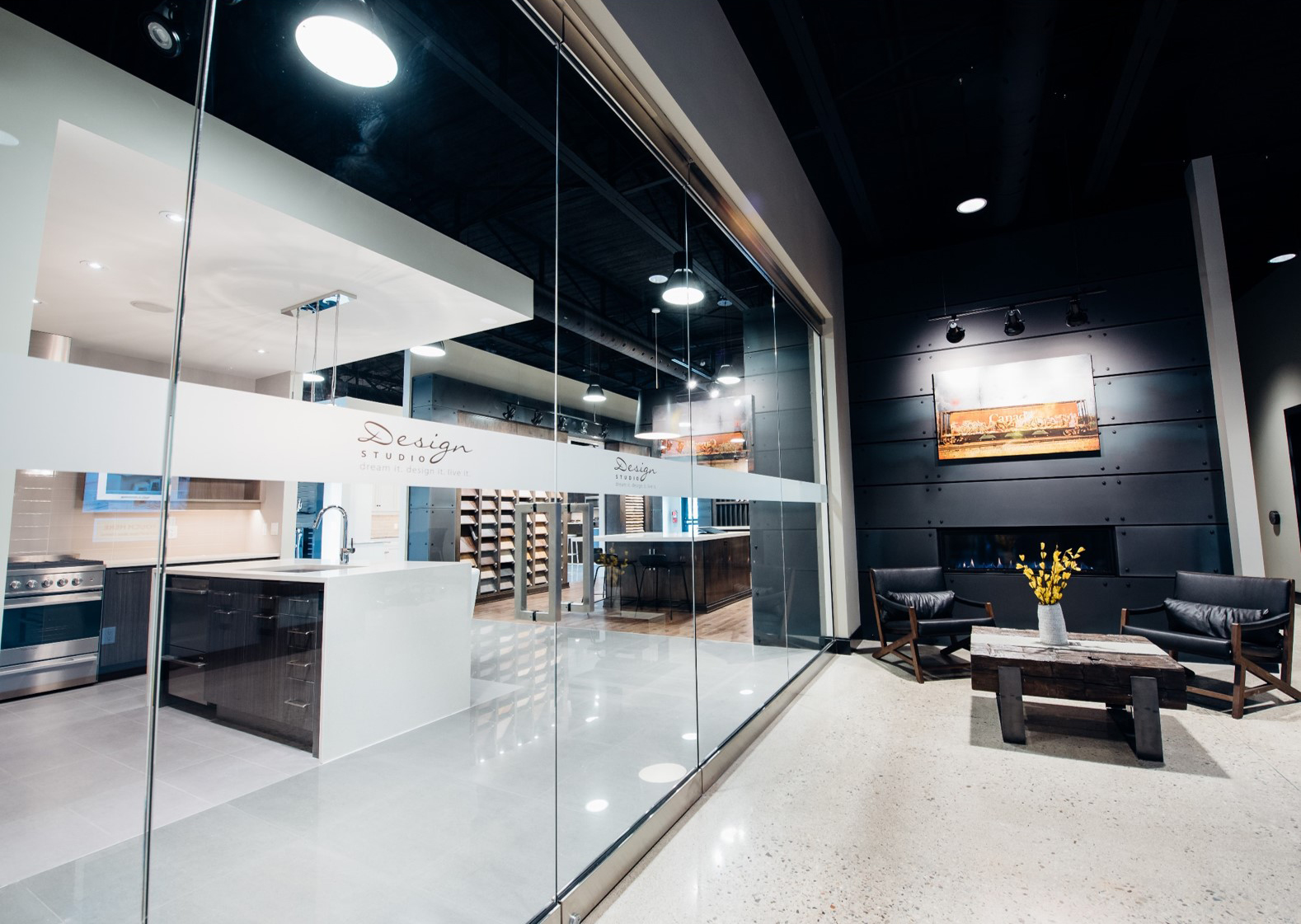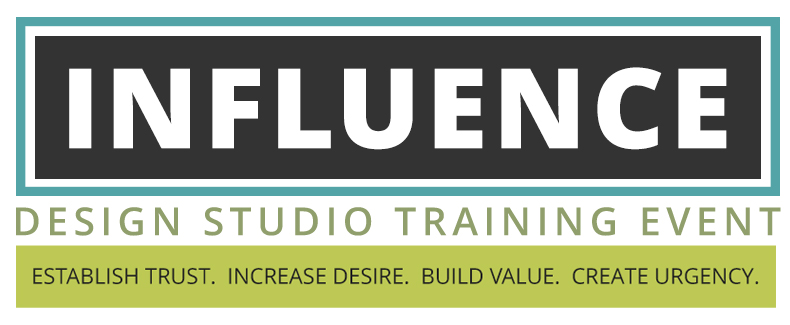
4 ways help to your design studio customers get “unstuck” and “trade up”
Article written by Jane
Does it ever feel like your customers become fixated on price, above all else?
Does it feel like no matter how enticing your options are, how dazzling your presentation is, how smooth your process is… they STILL want the lowest-price option—or resist making a choice at all?
This is a common challenge for design studio consultants. You may already know that people fall back to price as a “default” method for decision-making—and in previous weeks, we’ve covered a range of ways you can overcome that by building desire, establishing value and nailing your presentation.
… But, you may be thinking: what happens when you’ve already done the hard work of creating desire for your products?
What should you do when you’ve already walked through the process of building rapport, establishing trust, creating value around your options (just a few of the things we teach at our INFLUENCE Design Studio Training Event)… and your customers STILL struggle to switch from a “what’s it gonna cost me?” mindset, to a place of feeling excited about their investment?
Put simply… it’s time for a reset.
If you’re finding that your customers are still fixated on price, despite your best efforts, or that they’re struggling to commit to a decision at all, it’s time to hit pause and diagnose what’s really going on.

Here are 4 types of “decision-making first-aid” to try out, if your design studio customers are struggling to invest at higher levels
1. Check-in on comprehension and awareness
Start with the basics — do your customers have a full grasp of the scope of choices available to them?
It sounds simple, but that’s why it’s so deceptively easy to miss: if your customers are resistant to trading up to a product that would better suit their needs, are they fully aware of all the higher-end options available to them? Even if you’ve covered it during your presentation, this is the time to press pause and really check in about their understanding of the choices available.
We can’t want something if we don’t know that it exists. If your customer is struggling to make a decision or just looking for the lowest price option, this is a good time to revisit whether they have a firm understanding of their choices and how each one is different. Without comprehension there is no clarity — and without clarity, decision-making WILL stall.
2. Hunt down ambiguity
There are two types of ambiguity to be on the lookout for here. The first one is related to comprehension and a lack of clarity — and again, without clarity, confident decision-making can’t happen. Be sure to check out last week’s article for more on comprehension and preference for a deep-dive on this topic.
Another type of ambiguity stems from overwhelm. When customers see the scope of what’s available, they may struggle to establish clarity around which choice is a best match for their preferences and needs. In this case, they can become reluctant to commit to a decision due to “opportunity cost” (which is a little bit like FOMO, or “fear of missing out”). It’s human nature to resist committing to one thing when we’re afraid of missing out on the benefits that the other choices will offer.
In these situations, it’s time to revisit preferences and needs. If your customers understand the scope of what’s available, but can’t seem to make a choice (or again, are relying solely on price to make a choice), then it’s time to step in and help them clarify which option is the best fit.
Even if you’ve already explored this, this is where your customer really needs you to help them make the explicit connection between features, benefits, and the value that will bring to their new home and their new life — in light of their unique design preferences and lifestyle needs.

Granite Homes award-winning design studio is wowing their fortunate homebuyers with a top-notch personalization experience. The financial results are pretty awe-inspiring as well. The studio has been open approximately two years and has maintained a FOUR TIMES increase in design studio option sales since opening, while simultaneously improving customer survey scores. The builder takes a highly strategic approach to everything in their design studio, from product placement based on behavioral psychology principles to deploying pricing strategies that help buyers see value, to sales techniques that include helping buyers understand benefits of incremental investments.
3. Reconnect with benefits and value (and then go deeper)
Again, this may seem obvious, but this is first-aid for a reason! If your customer is stuck, you must come back to the foundations. In this case, check on whether your customer really understands the benefits of the options being presented to them, and how this relates to the aesthetic qualities, technical features and functional value of each product.
Let’s use carpet padding as an example. Many people have heard that a better carpet pad, what we call “High Performing Carpet Cushion”, can make your carpet wear longer and look better, although they may not really understand why or believe it’s true. That means they’ll be questioning: is it really worth it?
This is where we dig in deeper: perhaps the thicker padding (feature) doesn’t just make the carpet feel great (obvious benefit, due to its shock absorbent qualities)… but it also extends carpet durability and lifetime (and can even extend your carpet warranty by 5 years or more).
Going even further, that extra insulation can keep your home both warmer and quieter (long-term lifestyle benefits) and the protective barrier stops fluids from penetrating into the pad and subfloor (long-term value) — and that the carpet can be more easily cleaned due to the way the carpet is lifted off the floor by the padding.
This is just one example, but the take-home is: check in on whether you’ve dug deeper than preferences and the aesthetic value of your product. Value is proven by speaking into the performance, technical features and functions of the options available — and when you’re able to combine this with desire and preference, your presentation will pack a powerful punch.
With this approach, you’ll be able to support your customers in “trading up” in a way that will serve them better in the long term, and give them more enjoyment from their home for years to come.
4. Bust through psychological barriers
Sometimes, customers can get bogged down in their expectations around price or previous “limits” they had set on their budget — especially if these expectations have been unintentionally reinforced by the sales or design team. And so, when presented with a higher investment level, it can be really difficult to get over that mental hurdle of the price tag, even if we’ve done a great job of establishing value and creating desire.
To overcome this, it’s important to spend time to ensure that your customer understands the true financial meaning of the investment in front of them, and the impact that will have on their day to day life, or across their week and month. Customers can struggle to break down how a final price will look and feel, in terms of the payments required and the real implications that will have on their finances or their monthly mortgage repayment.
For example, in the mind of any buyer, a total price of $4000 is going to be perceived very differently than “the equivalent to one cup of Starbucks coffee each week” — and it’s our job as consultants to help them get over the “sticker shock” and make sense of how those payments will actually look and feel in real life.
At INFLUENCE, we teach how to get your customers to understand the monthly commitment and impact so that they can make a more informed financial decision rather than an emotionally reactive one.
At INFLUENCE, we spend 2 full days giving you the tools, processes and strategies you’ll need to overcome any objection and turn your design studio customers into confident decision-makers who are excited to invest in your options.

